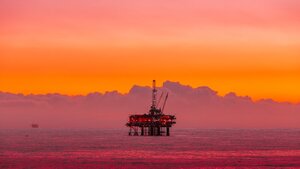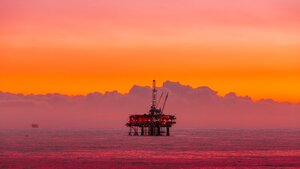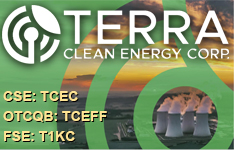The Energy Report: Chen, recent U.S. Environmental Protection Agency (EPA) actions with regard to ethanol blending requirements have been unsettling to the ethanol space. What are you expecting from the EPA and when?
Chen Lin: I expect an EPA ruling by the end of June. It will likely increase the mandate from last year's proposal, but will be less than the original mandate, which was established a couple of years ago. It will be in the middle because it's an election year, and the agency does not want to make anybody angry.
TER: Will the domestic market or the export market be stronger for ethanol in the future?
CL: The domestic market is still the largest and most important for the ethanol industry. However, export is getting more significant. Right now we export to Canada, to Brazil, to Asia—over the world. Europe's still banning the purchase of American ethanol because it wants to protect its domestic agriculture; so is Japan. That leaves China, which l see as potentially the most important up-and-coming market for American ethanol. This will benefit farmers and the renewable energy industry.
I had a discussion about ethanol use in China in my last interview with The Energy Report. I've done a lot more research on that subject lately. Look at gasoline usage in China: China has a huge automobile market, which translates to a huge gasoline market. Unfortunately, ethanol use is only 1—2%. The Chinese are still using MTBE, which is banned in the United States, Canada and all over the developed world. We know the problem: MTBE pollutes the groundwater. However, big oil in China— PetroChina Co. Ltd. (PTR:NYSE; 857:HKSE)—continues to mislead Chinese citizens, saying ethanol is bad for car engines and promoting use of MTBE, because it is heavily investing in MTBE. That's actually preventing the export of American ethanol to China.
"Mart Resources Inc.'s future looks very bright. By the end of 2014 we'll be looking at a very different company."
We should immediately start an information campaign to educate Chinese citizens about the danger of MTBE. We have a lot of evidence that it's polluting groundwater, and it costs billions of dollars to clean that up. Chinese citizens are very sensitive to pollution and to water quality. If they get that information, they will likely start protesting big oil in China. Also, the United States should have high-level talks with China—with the Premier—because big oil wouldn't listen to popular opinion. It doesn't care. It cares about profit. But big oil does listen to the Premier. That's probably the only way: Educate the people and then go to the top level to push China to gradually retire MTBE and use ethanol. That will benefit American farmers and the American renewable industry for decades to come.
TER: Are you saying that China will be the main export buyer of ethanol?
CL: Potentially it would. Right now China is using very little ethanol. If China begins to use more ethanol to cut pollution, the only loser would be big oil in China. China could provide a very bright future for ethanol producers and farmers, in the United States. But we need a strategy and need to push that hard.
TER: There's been a lot of confrontation in relations between China and the U.S. recently, as the U.S. has indicted Chinese officials for cyber espionage and has resisted China's claims to areas in the East China and South China seas. In response, China is banning or limiting operations by U.S.-based companies. How will these issues affect the companies you cover?
CL: China remains a big challenge, as well as a big opportunity, for U.S. businesses. China itself is changing because of the rise of the middle class. Believe it or not, the Chinese are very Internet-savvy. Most people I met last year when I was visiting China had Internet VPN (virtual private network) access. They bypass the firewall of the Chinese government and browse the Web freely, because nobody wants to read censored news.
The issues right now in China are the popping of the housing bubble, pollution and corruption. Those are the top concerns of Chinese citizens. I think they're probably more interested about fixing those than they are about fixing external confrontations. I don't think citizens would support confrontation.
But there could be some win-win situations. I think ethanol is the perfect example. It could be a win-win solution on both sides. We are living on the same Earth, so carbon emissions in China are the same as carbon emissions in the United States. The Obama administration has been very tough on reducing carbon emissions in the U.S. I think he can push China to reduce emissions as well. There's where I see the opportunities.
TER: How is the narrowing spread between West Texas Intermediate (WTI) and Brent affecting the companies you cover?
CL: The narrowing of WTI/Brent is very negative for the refiners; their margins are very sensitive to WTI/Brent. Fortunately, I sold all my refiners for a very nice profit. I don't own refiners at this time, even though I made very good money before. On the plus side, the spread will benefit the domestic oil producers, because the narrowing of WTI to Brent will increase what the producers sell. Also, we had a very cold winter, so the natural gas price is high. Domestic producers are in a very sweet spot right now because the oil price is higher, and the natural gas price is even higher.
TER: What is the status of Mart Resources Inc.'s (MMT:TSX.V) pipeline project in Nigeria?
CL: According to the company, it will finish pipeline construction by the end of June and start commissioning right after. I expect it will commission the new pipeline in Q3/14. The pipeline will potentially triple Mart's oil production. That will make Mart a completely different producer.
"Pan Orient Energy Corp.'s East Jabung is one of the best Indonesian fields, if not the best."
Another part of the news is that Mart is bidding on some huge oil fields being sold by majors, like Royal Dutch Shell Plc (RDS.A:NYSE; RDS.B:NYSE). Nigerian media is saying that Mart has already won one or more of the bids. I think the company still needs to work on the details, as well as financing. The big advantage for Mart and its local partners is that when they buy from big oil companies like Shell, they enjoy a five-year tax holiday as an indigenous company. That's the same as Mart enjoyed with its current field, though that holiday just expired.
You can understand why the major is willing to sell, and why Mart and other indigenous companies are willing to buy. It's a big opportunity. With the new pipeline, and then potentially with the new concession, there will be new marginal field programs for Mart in the future. The company's future looks very bright. By the end of 2014 we'll be looking at a very different company.
TER: Why did you call Pan Orient Energy Corp.'s (POE:TSX.V) East Jabung farm-out one of the most significant milestones in the company's history?
CL: I've been waiting for this for the past few years. Pan Orient acquired East Jabung during the financial crisis. It has the potential of half a billion barrels of oil equivalent (0.5 Bboe). It's oil and gas. That could make it one of the largest onshore conventional oil discoveries in the world. It's one of the best Indonesian fields, if not the best.
The fiscal terms are very important. It's split 35/65 with the Indonesian government. Pan Orient and Pan Orient's potential partner will get 35%, and the government will get 65%. The majority of the fields in Indonesia split 15/85. That makes a huge difference. This discovery is very valuable.
A recent report estimates each barrel equivalent will be worth $20–40. If you just take the low end, at $20, and multiply that by the potential of this possibly huge discovery—again, 0.5 Bboe—then figure Pan Orient will try to farm out 50% for carried interest, you can calculate roughly $5 billion ($5B). Convert that to Canadian dollars and divide it by shares, and it comes to almost $100/share. The stock right now is only $2/share. You can see the potential of this development.
If the company can farm out the drilling in the next couple of months—it needs to build a road first, and then can start drilling at the first half of 2015, if not earlier—that will be one of the most anticipated wells in the junior space.
"Domestic producers are in a very sweet spot right now because the oil price is higher, and the natural gas price is even higher."
Pan Orient is investing in some other important catalysts in the near term. One is in Canada, the heavy oil. It should start first oil in August. The company also has a high-impact well in Thailand, waiting for a permit from the government. Once Pan Orient gets the permit, it can potentially drill the wells in Q3/14. In Indonesia, another company, Singapore-listed Ramba Energy Ltd. (R14:SGX), discovered sizable oil on the other side of the border with Pan Orient's property. Pan Orient needs to drill one well on its side of the border, and then the companies will redraw the boundary of the oil. The oil is already discovered. The other company has already filed the plan for development, for up to 50,000 barrels per day (50 Kbbl/d). It's a big oil field, and Pan Orient has the crest of the discovery. These catalysts are all going to happen before East Jabung.
In terms of the timeline, Pan Orient has many, very important, company-changing catalysts in the next 6–12 months. In the past few years, the company has had very bad luck drilling in Indonesia. Almost every one of the past five or six wells it drilled was dry. Expectations of the investment community have been very low. Some people even stated publicly that every well from now on would be a dry hole. That's why the stock price is a rock-bottom $2/share—because Pan Orient stock price is just above its current cash and its 2P reserve, which is worth about $2. The upside is not priced in by the market. That's why the next 6–12 months could be very exciting.
TER: Has the farm-out been appealing to investors? Has it affected the share price?
CL: Not much. Just in the last quarter, the company announced it was close to a 49% farm-out. I assume in the next couple of months, it will announce who the partner is and how much money the partner will pay for the 49%. I think when investors take a look at the terms, they will react differently.
TER: Pacific Ethanol Inc. (PEIX:NASDAQ) has had an exciting year, with a sevenfold increase in its share price. What's behind that, and what's ahead for Pacific Ethanol?
CL: Pacific Ethanol was one of my biggest winners in the past 6–12 months. It was a great turnaround story, thanks to the low corn price. At the end of last year, the corn price suddenly dropped. For a highly leveraged company like Pacific Ethanol, this was a huge opportunity, because it went from not making money to suddenly making a lot of money. I was very fortunate. I was able to load up on the shares, as well as its call options, at the end of last year. I was able to book huge profits when the share price popped to double digits with the Q4/13 earnings release. That's when I sold my call options; I sold most of my shares at around $16/share, ahead of Q1/14, because at that time I felt the market was a bit frothy. The market expectation was very high. I'd rather take a profit off the table.
I started buying shares when the price fell close to $10/share. After the earnings, I bought back Pacific Ethanol at $11, $10.50. I told my subscribers I would buy at $11, $10.50 and $10, but $10 was never reached—maybe because my subscribers were also buying. That's life. I feel the stock has a lot of room to grow. The company raised money at $16/share. It strengthened its balance sheet. It restarted Madera, another ethanol plant, in this quarter.
Right now the ethanol margin is very high. It dipped a couple of months ago; now it's very high again—very volatile. Pacific Ethanol is trading with no hedge. That's a great opportunity to make a lot of money in Q2/14.
TER: Green Plains Renewable Energy Inc. (GPRE:NASDAQ) began a growth spurt in December 2013 that has continued. What was the catalyst for that?
CL: Green Plains had a good run. I also own the stock. Again, the ethanol industry had a boom because of the low corn price. Green Plains remains the cheapest publicly traded ethanol producer in terms of capacity versus market cap. However, because of an aggressive hedging program, the upside was very limited; the company's earnings were not strong.
If you compare the Green Plains margin versus Valero Energy Corp.'s (VLO:NYSE) ethanol division margin, though they are similarly sized, Valero's margin is almost three times higher than Green Plains. That's how bad the hedging program was. On the other hand, Green Plains is the largest independently traded ethanol producer. It could be a very good takeover target. For company refiners on the West Coast, Pacific Ethanol is a better takeover target. Both Green Plains and Pacific Ethanol are excellent targets, and I'm quite excited about both companies.
TER: Are you expecting Green Plains' growth spurt to continue?
CL: Yes. It's well run. The only problem is the hedge at the $0.20–0.30 margin, when the company could get $0.70–0.80 margin in the spot market. But the company still makes a lot of money at the $0.20–0.30 margin. It probably will pay off all of its debt by the end of 2015.
TER: Were you surprised that Wells Fargo & Co. (WFC:NYSE) downgraded Swift Energy Co. (SFY:NYSE) from outperform to market perform and lowered its target price?
CL: That's a good question. I was a little bit surprised. I would say those analysts are busy counting the trees but missing the big forest. Years ago, most analysts were pushing every oil company to take on more debt to show growth. Now it's just the opposite. They're severely punishing companies with debt. Analysts demand that companies sell their assets at whatever cost to bring their balance sheets to the level the analysts want to see. Personally I see opportunity.
As we discussed earlier, WTI is on the rise and natural gas is on the rise. I heard liquified natural gas (LNG) export terminals will be ready by 2016. We had a very cold winter; natural gas storage is very low. It will take a few years to refill natural gas storage facilities. Before we can finish the refill, LNG exports will start. Natural gas looks brighter than oil, if you look ahead a few years. But both commodities—oil and natural gas—are looking good. A lot of businesses are looking to get into the North American oil and gas opportunities.
"If the United States can open up the ethanol market in China, the ethanol boom will go on for years, if not decades."
In addition, there has been very active deal-making. In the last month or so, when Swift Energy farmed out its natural gas property, it sold half its assets for about $175 million ($175M), which is about $70,000 ($70K) per acre. It had estimated only $20–30K. That's a perfect example of how, in a rising commodity environment, which I believe we are in, leverage is a good thing. Swift Energy has a big acreage at Eagle Ford, and it's trading at two times cash flow when most companies are trading at five or more. Many assets recently sold for ten times cash flow. There are a lot opportunities.
Analysts have a fancy term. They call it EBITDA (earnings before interest, taxes, depreciation and amortization). They use that to analyze value. Basically, they add the debt to the market cap. That's only one side of the story—EBITDA versus EV (enterprise value). How about the asset? How about acreage? How about 2P reserve? That's my experience. The analysts tend to be overly bearish when the market starts to turn, when you should buy, and be overly optimistic at the top of the market. Again, that's my opinion. Maybe the best analysts are not working for the hedge funds.
I had a very good run last year. I bought Penn Virginia Corp. (PVA:NYSE) below $5 late last year. It more than tripled in less than a year. I also have a big run on Lightstream Resources Ltd. (LTS:TSX). I still hold Lightstream; I sold Penn Virginia. They're quite similar to Swift Energy. They're heavily shorted. They have a sizeable debt. They have no love on Wall Street. It's a little like the housing market: When it goes down big time, you don't want any leverage; when it goes up, leverage is good. When the energy outlook looks brighter, as I see it is, a company can sell assets at good prices. Then the funds will get in. The shorts will try to get out. The stock can have a big run, and I see similar situations to that of Swift Energy.
TER: Do you have any other companies that you're excited about right now?
CL: I still like international plays. I like companies with good balance sheets. I like companies with good cash flow. I like companies that can grow on their own. Also, right now, I feel the North American market has stabilized enough that companies with a reasonable amount of debt look very good. The market has been going to extremes on debt.
I'm also very bullish on ethanol. Finally, I want to emphasize that every commodity China needs went through the roof. Oil, liquefied natural gas, copper—you name it. If the United States can open up the ethanol market in China, the ethanol boom will go on for years, if not decades.
TER: Thank you, Chen.
CL: Thank you.
Chen Lin writes the popular stock newsletter What Is Chen Buying? What Is Chen Selling?, published and distributed by Taylor Hard Money Advisors Inc. While a doctoral candidate in aeronautical engineering at Princeton, Lin found his investment strategies were so profitable that he put his Ph.D. on the back burner. He employs a value-oriented approach and often demonstrates excellent market timing due to his exceptional technical analysis.
Read what other experts are saying about:
Want to read more Energy Report interviews like this? Sign up for our free e-newsletter, and you'll learn when new articles have been published. To see recent interviews with industry analysts and commentators, visit our Streetwise Interviews page.
DISCLOSURE:
1) Tom Armistead conducted this interview for Streetwise Reports LLC, publisher of The Gold Report, The Energy Report, The Life Sciences Report and The Mining Report, and provides services to Streetwise Reports as an independent contractor. He owns, or his family owns, shares of the following companies mentioned in this interview: None.
2) The following companies mentioned in the interview are sponsors of Streetwise Reports: Mart Resources Inc., Pan Orient Energy Corp., Royal Dutch Shell Plc. Streetwise Reports does not accept stock in exchange for its services.
3) Chen Lin: I own, or my family owns, shares of the following companies mentioned in this interview: Pacific Ethanol Inc. and stock options, Swift Energy Co. and stock options, Mart Resources Inc., Pan Orient Energy Corp., Green Plains Inc., and Lightstream Resources Ltd. I personally am, or my family is, paid by the following companies mentioned in this interview: None. My company has a financial relationship with the following companies mentioned in this interview: None. I was not paid by Streetwise Reports for participating in this interview. Comments and opinions expressed are my own comments and opinions. I had the opportunity to review the interview for accuracy as of the date of the interview and am responsible for the content of the interview.
4) Interviews are edited for clarity. Streetwise Reports does not make editorial comments or change experts' statements without their consent.
5) The interview does not constitute investment advice. Each reader is encouraged to consult with his or her individual financial professional and any action a reader takes as a result of information presented here is his or her own responsibility. By opening this page, each reader accepts and agrees to Streetwise Reports' terms of use and full legal disclaimer.
6) From time to time, Streetwise Reports LLC and its directors, officers, employees or members of their families, as well as persons interviewed for articles and interviews on the site, may have a long or short position in securities mentioned. Directors, officers, employees or members of their families are prohibited from making purchases and/or sales of those securities in the open market or otherwise during the up-to-four-week interval from the time of the interview until after it publishes.










































